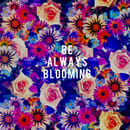I walked into English class having just finished Zora Neale Hurston’s Their Eyes Were Watching God, the first book we’d read that addresses themes of racism. The class itself is focused on the use of humor in literature, so we were asked to identify allusions in the book to “minstrelsy,” an old form of humor in which people of color were represented as caricatures to emphasize stereotypes. We were also asked to watch clips from television shows featuring stereotyping jokes and horrifyingly, prominent use of the n-word and blackface. Most of the clips were from the 1940s and 50s, but some were from the early 2000s which seems entirely too recent; they all made me wildly uncomfortable. I could identify the jokes and the ways in which they were supposed to be funny, but spent more time cringing than laughing.
When I got to class, some of my classmates were already discussing the clips we’d watched and I could see most of them had different reactions than I had. One boy in particular thought they were hilarious and another girl said the n-word several times when laughing about a specific clip. I wanted to voice my discomfort, but felt unable to do so. I just sat silently staring at the table.
Eventually, the professor walked in and we discussed the book and videos as a class, talking about how their level of acceptableness has changed over the past decade or so. But sitting there sharing opinions on racial issues seemed wrong in a class made up almost entirely of white people. Even in classes with a few people of color (it’s almost never more than a few), there is an unspoken expectation for them to speak for their entire race every time they answer a question even mildly pertaining to race.
This is an entirely new concept to me because my high school was made up of around 60 percent students of color. This diversity of perspectives was extremely valuable and class discussions about contemporary racial issues felt much more accurate and representative.
This is definitely not the case at here. Most people you ask would say Kenyon has a diversity problem. It doesn’t just end with the students either; only 25 percent of faculty identify as ethnically diverse. Kenyon plans to address this as part of the 2020 plan, promising to make affordability, financial aid, and diversity as a whole more of a priority. This all sounds great and I hope it has the positive impact they’re promising, but until Kenyon makes a conscious effort to create a faculty with a wider range of perspectives and backgrounds, little is going to change.
I’ve never experienced racism or microaggressions and I cannot claim to understand what it feels like. But by not forcing myself to speak up and tell them what they were saying was not okay, I became part of the problem. Everyone grows up differently and has different levels of understanding regarding these issues and if someone says something you’re not okay with, don’t just let it go or assume someone else will address it. I recognize my position of privilege as a white person not just on this campus, but everywhere, and I have to be able to use it in a constructive way by speaking up when people of color are not there to defend themselves or do not feel safe doing so.



